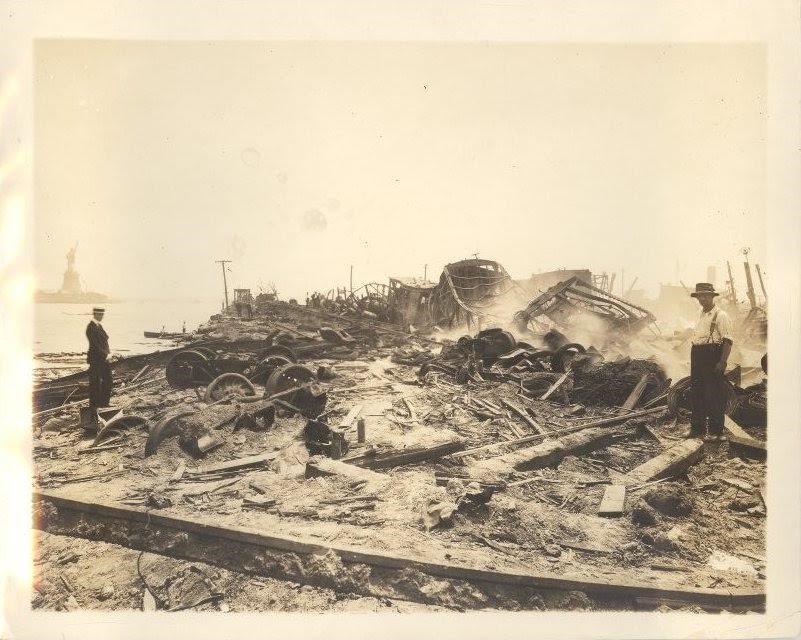Last updated: July 18, 2017
Article
Domestic Sabotage: The Explosion at Black Tom Island

Liberty State Park (NJ) archives
In the early morning hours of July 30, 1916, a munitions depot located on Black Tom Island, in Jersey City, NJ, was deliberately sabotaged to prevent supplies from being delivered to Britain and France during World War I. Due to a shortage of cargo ships, stockpiles of ammunition and explosives sat in warehouses, railroad box cars, and on barges belonging to the Lehigh Valley Railroad.
The night of July 29th was quiet on nearby Bedloe’s Island, illuminated by the torch of the Statue of Liberty. Soldiers on watch could not have seen saboteurs sneak onto Black Tom Island and place explosives. Shortly before 2 am the first explosion occurred, waking up Commander Captain Alfred T. Clifton and his wife, Elizabeth.
The commander of Company G of the United States Army Signal Corps telephoned the base’s two officers and ordered the bugler to sound a general alarm to assemble the men and the officers to get the women and children to the parade ground. Most of the families were already awake; the blast shattered glass windows across the island. By the time of the second and largest explosion at 2:05 am, the women and children, still in bedclothes, were walking toward the east side of Fort Wood, at the base of the Statue, for protection.
The force of the second blast sent shrapnel from the exploding shells, bullets and debris as well as glass and wood flying down upon the island, causing significant damage to the island’s 17 buildings. Much of the debris came from a storage warehouse on the west side of the island that was destroyed. The shower of debris lasted for two hours. Several pieces of shrapnel became embedded in the right side of the Statue of Liberty, facing Black Tom Island. The shock wave from the second blast pushed the torch arm against the crown of the statue, damaging the structure’s internal framework. At the main entrance of Fort Wood, a four-inch-thick iron door was wrenched off its hinges and pushed inward as if by a giant hand. However, the torch of the Statue of Liberty remained illuminated throughout the ordeal.
Although closer to Black Tom Island, the brick buildings on Ellis Island sustained the blast well. Although windows were blown out and the roof of the Main Building collapsed, the sturdy brick buildings survived intact. The beautiful Guastavino tiles that adorn the Registry Room ceiling at Ellis Island today were put in place following the repairs this attack necessitated.
Fearing further attack, and building collapse, the immigrant detainees and staff on Ellis Island, and civilian women and children on Bedloe’s Island were quickly ferried to Battery Park and Governor’s Island for safety. Although this is the closest some would come to combat during World War I, the conflict rattled at America’s golden door.
